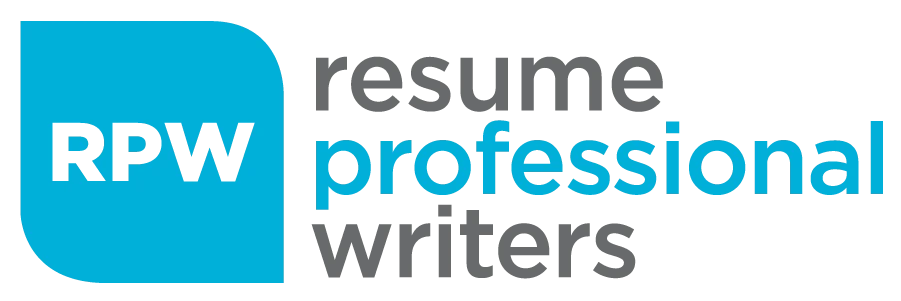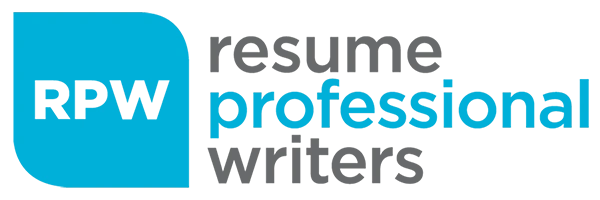Switching careers can be daunting, especially when it comes to creating a resume. How do you highlight your qualifications and convince hiring managers of your potential in a new field? A well-crafted change in career resume is the key. This guide will show you how to emphasize transferable skills, choose the right format, and craft a compelling summary. It will also provide career change resume examples to illustrate key points. Let’s dive in and get you started on your new career path.
Key Takeaways
- Focus on transferable skills and relevant experiences to demonstrate your suitability for a new industry.
- Select the right resume format, such as a combination or functional resume, to highlight your skills and experience effectively.
- Craft a compelling resume objective or summary that aligns your past accomplishments with the job description and your future career goals.
Understanding Career Change Resumes
A career change resume is fundamentally different from a traditional resume. While a typical resume focuses heavily on work experience within the same industry, a career change resume emphasizes transferable skills and relevant experiences that can apply to a new field. This approach is crucial because it helps communicate your suitability for a new role, even if you lack direct experience in that industry.
The primary purpose of a career change resume is to serve as a marketing tool for your qualifications. It demonstrates to hiring managers that you have the potential to be an asset, even if your career path has taken a different route up to this point. Focusing on transferable skills and relevant experiences bridges the gap between past roles and future career goals. Additionally, a career change resume can highlight your commitment to professional development, which is crucial for convincing hiring managers of your potential.
Key elements of a career change resume include prominently highlighting transferable skills, often even above work experience. This strategy helps catch the eye of potential employers who are looking for specific capabilities rather than a linear career trajectory.
Ultimately, a well-crafted career change resume shows that you’ve done your research, understand the industry you’re entering, and are ready to bring valuable skills to your new career path.
What is a Change in Career Resume?
A career change resume is a specialized type of resume designed for individuals transitioning from one career to another. Unlike traditional resumes that focus heavily on work history within the same industry, a career change resume emphasizes transferable skills and relevant experiences that can be applied to a new career. This approach is essential for bridging the gap between your current experience and the requirements of your desired new role. By highlighting your transferable skills, you can demonstrate to potential employers that you have the capabilities needed to succeed in a new field, even if your previous roles were in a different industry.

Benefits of a Well-Crafted Career Change Resume
A well-crafted career change resume can significantly enhance your job search efforts. Here are some key benefits:
- Increased Visibility: A targeted resume increases your chances of getting noticed by hiring managers and recruiters.
- Showcase Transferable Skills: It allows you to effectively highlight transferable skills and relevant experiences, making you a more attractive candidate.
- Enhanced Credibility: A polished resume boosts your credibility and confidence during the job application process.
- Greater Flexibility: It opens up a wider range of career choices and opportunities by showcasing your adaptability.
- Clear Career Goals: A well-structured resume presents your career goals and aspirations clearly, helping potential employers understand your motivations.
Choosing the Right Resume Format for Career Changers
Choosing the appropriate resume format is vital for those changing careers. One effective option is the combination resume format, which balances the emphasis on both skills and relevant experience. This format allows you to showcase your transferable skills while still providing a chronological overview of your work history.
Another popular choice is the functional resume format. This format is particularly beneficial for those with limited experience in their new industry, as it focuses on transferable skills and accomplishments rather than job titles and dates. However, it’s important to note that some hiring managers may perceive functional resumes as an attempt to hide employment gaps or lack of experience, so use this format judiciously.
A hybrid or combination resume format often offers the best of both worlds for many career changers. It includes a skills summary section at the top, followed by a chronological work history. This approach ensures that your most relevant skills are highlighted while still providing a clear record of your previous jobs. Choosing the right format allows you to effectively present yourself as a strong candidate for your new career path.
Crafting a Strong Resume Objective or Summary
A well-crafted resume objective or summary is vital for career changers. This section serves to clarify your interest in the new industry and demonstrate how your past experiences align with the requirements of the new role. A resume objective or summary helps hiring managers quickly understand your career goals and how you plan to achieve them. Additionally, it can clearly articulate your interest in a new career, making your intentions and aspirations evident to potential employers.
In a career change resume objective, emphasize skills and experiences from previous roles that apply to the new industry. For example, if you’re transitioning from a customer service role to a digital marketing position, highlight your communication skills, problem-solving abilities, and any relevant technical skills.
A resume summary can be particularly effective because it allows you to highlight key accomplishments and relevant skills in a concise manner. This section should be no longer than a couple of sentences and should focus on your top qualifications and professional goals within the new industry. A compelling resume objective or summary sets the stage for the rest of your resume and makes a strong first impression on potential employers.
Highlighting Transferable Skills
Highlighting transferable skills is crucial when changing careers. These are skills that are applicable across various jobs and industries, such as communication, problem-solving, and project management. Emphasizing these skills shows hiring managers that you possess the capabilities needed for success in a new role and can help you land your dream job.
Transferable skills are highly valued by employers because they enable employees to contribute in multiple areas. Key transferable skills include technical proficiency, research abilities, graphic design, and data analysis. Highlighting technical skills as part of your transferable skills is particularly important, as it demonstrates your ability to adapt to new tools and technologies. Highlighting these skills effectively can make your resume stand out, even if you lack direct experience in the new industry.
A well-structured skills summary on your resume should detail how each skill has been applied in past experiences. Use specific examples and quantify achievements whenever possible to demonstrate your proficiency. For instance, if you have project management experience, mention the number of projects you managed and their outcomes. This approach helps potential employers see the tangible benefits you can bring to their organization.

Showcasing Relevant Work Experience
In a career change resume, showcasing your work experience effectively is about more than just listing previous jobs. It’s about prioritizing transferable skills and relevant responsibilities that can appeal to potential employers in your new career transition.
When crafting this section, ensure you do not skip the work experience altogether. Include your most recent two or three jobs, along with any relevant volunteer experiences, to paint a complete picture of your professional background. Highlight responsibilities and achievements that demonstrate your capabilities and transferable skills.
Enhance the presentation of your achievements by using strong action verbs and avoiding passive phrases like ‘responsible for’ at the start of bullet points. This improves the clarity and impact of your accomplishments. For example, instead of saying “Responsible for managing a team,” say “Led a team of 10 to achieve a 20% increase in sales.” This approach makes your resume more dynamic and engaging.
Emphasizing Education and Certifications
Highlighting education and certifications on your career change resume is vital as it showcases your passion for learning and demonstrates transferable skills. Including descriptions of relevant coursework, such as classes and GPA, can significantly enhance your resume by providing concrete evidence of your qualifications.
Relevant training and certifications can further strengthen your resume by showing that you have taken the initiative to gain skills pertinent to your new industry. Whether it’s a digital marketing certification or a project management course, these credentials can set you apart from other candidates and show your commitment to professional development.
List your educational credentials, including the degree, institution, graduation date, and any honors or certifications obtained. This provides a comprehensive view of your academic background and highlights your dedication to continuous learning, which is particularly important when changing careers.
Including Personal Projects and Volunteer Work
Personal projects and volunteer work can play a significant role in enhancing a career change resume. These experiences highlight applicable skills outside of formal employment and demonstrate your commitment to the new career path.
When including personal projects, prioritize those that are relevant to the new job. For instance, if you are transitioning to a marketing role, a personal project where you managed social media for a local nonprofit can be highly relevant. Similarly, volunteer experiences that align with the industry or role you are moving into can effectively demonstrate your capabilities and dedication.
Ensure that the section for projects and accomplishments is well-structured and clearly shows how each experience relates to key skills or characteristics needed for the desired career path. This can include personal projects, volunteer work, or involvement in industry-related clubs, all of which help round out your resume and make you a more attractive candidate to potential employers.
Optimizing Your Resume for Applicant Tracking Systems (ATS)
In today’s job market, optimizing your resume for Applicant Tracking Systems (ATS) is essential. Tailor your career change resume by using keywords from job descriptions to ensure it passes ATS screenings. These keywords prove your qualifications and help your resume pass automatic review filters. Including a resume summary that incorporates relevant keywords is also important to pass ATS screenings.
Including relevant keywords can be as simple as mirroring the language used in the job description or job posting. For example, if a job posting emphasizes “project management skills,” ensure that these exact words appear in your resume. This strategy can significantly increase the chances of your resume making it through the initial screening process.
Online tools like Jobscan can help analyze your resume against job descriptions to suggest keyword improvements and formatting fixes. Maintaining a straightforward resume format is also crucial to ensure it is effectively read by ATS. Avoid using creative designs and layouts, as these can confuse the system and reduce your chances of moving forward in the hiring process.

Tips for Writing a Career Change Resume
Writing a career change resume requires a strategic approach to emphasize your adaptability and readiness for a new challenge. Here are some tips to consider:
- Focus on Transferable Skills: Highlight skills that can be applied to the new career, such as communication, problem-solving, or leadership skills.
- Use a Functional Resume Format: This format emphasizes skills and experience rather than work history, making it ideal for career changers.
- Tailor the Resume to the Job Description: Use keywords and phrases from the job description to demonstrate relevance and interest in the new career.
- Emphasize Relevant Education and Training: Highlight any relevant coursework, certifications, or training programs that demonstrate a commitment to the new career.
- Use Action Verbs and Results-Driven Statements: Use action verbs such as “managed,” “created,” and “developed” to describe achievements and results-driven statements to demonstrate impact.
Do’s and don’ts
DO:
- Use a clear and concise writing style.
- Incorporate keywords and phrases from the job description.
- Highlight transferable skills and relevant experience.
- Emphasize relevant education and training.
- Emphasize relevant education and training.
- Use action verbs and results-driven statements.
DON’T
- Focus solely on work history.
- Use jargon or technical terms that may be unfamiliar to hiring managers.
- Apologize for lack of experience or skills.
- Use a generic or template-based resume.
- Forget to proofread and edit the resume.
What Hiring Managers Look for in a Career Change Resume
Hiring managers look for several key qualities and characteristics in a career change resume. Understanding these can help you tailor your resume to meet their expectations:
- Transferable Skills: The ability to apply skills and experience from one career to another is crucial.
- Adaptability: Demonstrating your ability to adapt to new challenges and environments is essential.
- Relevance: Highlighting the relevance of your education, training, and experience to the new career shows you’re a good fit.
- Enthusiasm and Motivation: Clearly expressing your career goals and aspirations can set you apart.
- Results-Driven Statements: Showcasing your impact and achievements in previous roles can make a strong impression.
Key Qualities and Characteristics
- Strong Communication and Interpersonal Skills: Essential for almost any role, these skills demonstrate your ability to work well with others.
- Ability to Work in a Team Environment: Teamwork is often a critical component of success in many careers.
- Problem-Solving and Analytical Skills: These skills show your ability to tackle challenges and find effective solutions.
- Leadership and Management Skills: Highlighting these skills can demonstrate your potential for growth and leadership in a new role.
- Adaptability and Flexibility: Being able to adapt to new situations and environments is crucial for a successful career change.
- Enthusiasm and Motivation for the New Career: Showing your passion and drive for the new career path can make a significant impact.
- Results-Driven Statements and Demonstrated Impact: Quantifying your achievements and showing tangible results can help you stand out.
By following these guidelines and tips, you can craft a compelling career change resume that effectively showcases your potential and helps you make a successful transition to a new career.

Career Change Resume Examples
Seeing career change resume examples can provide valuable insights into how to craft your own. For instance, a customer service representative applying for a digital marketing specialist position can highlight communication skills, problem-solving abilities, and any relevant technical skills like social media management.
Each career change resume example includes different resume objectives and quantifiable accomplishments, which demonstrate the importance of highlighting relevant skills and achievements. Such examples show how transferable skills can be effectively presented to match the requirements of the new industry. These examples can help you tailor your resume to land your dream job.
A career change resume template can serve as a starting point for creating your resume. These templates often include sections for a resume objective, skills summary, work history, education, and personal projects, all tailored to highlight your potential in a new field.
Writing a Career Change Cover Letter
A cover letter is a powerful tool for elaborating on your resume’s key points and explaining your interest in the role and the company. It provides an opportunity to clarify your context for changing careers and how the position aligns with your broader career goals. Additionally, a cover letter can help explain your interest in your new career path, making it clear why you are passionate about this transition.
Emphasizing past achievements in your cover letter can demonstrate your potential value to the new role. Use action verbs to make your experience more engaging and impactful. For example, instead of saying “managed a team,” say “led a team to achieve record-breaking sales.” Tailoring your cover letter to each position helps highlight the most relevant skills and experiences for the job.
Connecting past experiences with the requirements of the new job shows potential employers that you have the skills and enthusiasm needed to succeed in your new career. A well-crafted cover letter, combined with a compelling career change resume, can significantly enhance your job search efforts when switching careers.
Summary
Crafting a compelling career change resume is about more than just listing your previous jobs. It’s about strategically presenting your skills, experiences, and accomplishments to show potential employers that you are the right fit for the new role. A functional resume can be particularly beneficial for career changers as it emphasizes skills over chronological work history. By choosing the right resume format, highlighting transferable skills, and optimizing your resume for ATS, you can make a strong case for your career transition. Remember to complement your resume with a tailored cover letter that articulates your passion and suitability for the new career path.

Turn Your Career Change Goals to Reality with a Compelling Resume
Making a successful career change requires strategic planning, a clear understanding of your transferable skills, and a well-crafted resume that highlights your unique value. By tailoring your resume to the job description and showcasing your adaptability, you can confidently transition to a new role and achieve your professional goals.
With professional resume writing expertise, you can ensure your strengths are effectively highlighted to open doors to new opportunities. Let our experts craft a resume that sets you apart and takes you closer to your dream career. Take the first step—partner with Resume Professional Writers today!
Frequently Asked Questions
What is the best resume format for a career change?
The hybrid or combination resume format is the best choice for a career change, as it highlights your transferable skills while still giving a chronological account of your work history. Embrace this format to effectively showcase your potential and make a strong impression!
How do I highlight transferable skills on my resume?
To effectively highlight transferable skills on your resume, prominently include them in the skills summary and support them with specific examples and quantifiable achievements from your past roles. This approach will showcase your abilities and make you stand out!
Should I include a resume objective or summary for a career change?
Yes, including a resume objective or summary is essential for a career change as it clearly expresses your interest in the new field and highlights how your past experience can contribute to your success in the new role. This strategic addition can significantly enhance your chances of making a positive impression.
How can I optimize my resume for Applicant Tracking Systems (ATS)?
To effectively optimize your resume for Applicant Tracking Systems (ATS), focus on incorporating relevant keywords from the job descriptions, maintain a clean and simple format, and steer clear of complex designs. Utilize tools like Jobscan for analysis and tailored improvements to boost your chances!
What should be included in a career change cover letter?
A successful career change cover letter should clearly articulate your interest in the new role and company while highlighting relevant skills and past achievements. Tailor each letter to emphasize how your unique experiences make you a strong fit for the position.








